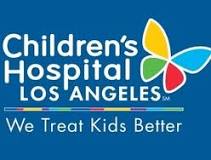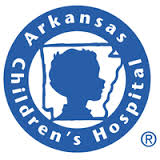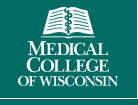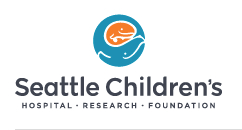Decreasing Antibiotic Use in Infants With Suspected Ventilator-associated Infection
| Status: | Active, not recruiting |
|---|---|
| Conditions: | Pneumonia, Pneumonia, Infectious Disease, Infectious Disease |
| Therapuetic Areas: | Immunology / Infectious Diseases, Pulmonary / Respiratory Diseases |
| Healthy: | No |
| Age Range: | Any - 3 |
| Updated: | 4/6/2019 |
| Start Date: | March 20, 2017 |
| End Date: | July 1, 2019 |
This is a prospective study with three specific aims: (1) To convene a consensus conference
to develop a guideline for antibiotic use in infants (age < 3 yrs) with suspected
ventilator-associated infection; (2) To evaluate outcomes before and after implementation of
the antibiotic guideline; (3) To evaluate changes in the tracheal microbiome over the course
of mechanical ventilation
to develop a guideline for antibiotic use in infants (age < 3 yrs) with suspected
ventilator-associated infection; (2) To evaluate outcomes before and after implementation of
the antibiotic guideline; (3) To evaluate changes in the tracheal microbiome over the course
of mechanical ventilation
In 2011 the Centers for Disease Control (CDC) estimated antibiotic-resistant infections
resulted in $20 billion in excess healthcare costs and more than 100,000 unnecessary deaths
in the U.S. alone. Ventilator-associated infections (VAI) are the most commonly diagnosed
hospital-acquired infections in the pediatric intensive care unit (PICU) and account for more
than half of all antibiotic use. We believe the diagnosis is often in error and that much of
the antibiotic use is unnecessary. Initiating broad-spectrum antibiotics is routine when VAI
or other infection is suspected in the child on mechanical ventilation, but our data show
when all other cultures are negative at 48-72 hours antibiotics are frequently still
continued based on identification of bacteria in respiratory secretion cultures. The
investigators have previously shown, however, that identification of bacteria in respiratory
secretion cultures is common in asymptomatic children and continuing antibiotics on the basis
of a "positive" respiratory secretion culture is not associated with a shorter hospital stay
or improved survival.
Antibiotics are not benign. Antibiotics are expensive, have disproportionate adverse effects
in younger children, often require placement of catheters that are themselves potential
sources of infection, and their overuse has been associated with increasing resistance
worldwide. Antibiotic exposure in young children has been associated with increased risk for
obesity, types 1 and 2 diabetes, inflammatory bowel diseases, celiac disease, allergies, and
asthma. Mouse studies have found that early antibiotic exposure disrupts the development of
the early-life gut bacterial composition (microbiome), leading to metabolic perturbations
that affect fat deposition and may alter normal immunologic development.
There is no diagnostic test for VAI and distinguishing tracheal bacterial colonization from
actual infection is not straightforward. The normal lung is essentially sterile but placement
of an endotracheal tube (ETT) compromises the lung's ability to clear aspirated secretions
and allows a direct route for bacterial contamination from the mouth and throat. The
resultant tracheal bacterial composition (the "microbiome") is largely unstudied but
preliminary research suggests it consists of small numbers of a wide diversity of bacteria
originating from the mouth. Loss of this bacterial diversity in conjunction with
proliferation of pathological bacteria is thought to herald the conversion from colonization
to infection.
The investigators believe that a positive respiratory culture alone in the absence of other
indicators of infection is insufficient justification for continuing antibiotics and,
consequently, much of the antibiotic use in VAI is both unnecessary and potentially harmful.
To critically evaluate this belief and potentially decrease the use of unnecessary
antibiotics we propose the following:
Aim 1: To develop a guideline to assess the likelihood of VAI and discontinue antibiotics
when the risk is judged to be low Hypothesis 1.1: Using an iterative process PICU doctors can
reach consensus on criteria to assess the likelihood of VAI and discontinue antibiotics when
the risk of VAI is judged to be low
Aim 2: To assess the efficacy and safety of discontinuing antibiotics in children judged to
have a low risk of VAI Hypothesis 2.1: Discontinuing antibiotics at 48-72 hours in children
judged to have a low risk of VAI will result in fewer total days on antibiotics with no
difference in survival, numbers of subsequent infection episodes, duration of need for
mechanical ventilation and length of stay in the PICU compared to care prior to the
implementation of the guideline.
Aim 3: To describe the longitudinal changes in the tracheal bacterial composition (the
"microbiome") in children on mechanical ventilation Hypothesis 3.1: Loss of diversity in the
tracheal microbiome will predate clinical signs and symptoms of VAI.
Hypothesis 3.2: Emergence of a dominant bacterial pathogen in the tracheal microbiome will be
associated with clinical signs and symptoms of VAI.
Decreasing unnecessary antibiotic use has important implications for public health. Pediatric
intensive care medicine is running out of effective antibiotics while also exposing our
children to antibiotic risks, many of which are only now beginning to be understood.
Avoidance of unnecessary antibiotic exposure in young children is critical and would be
facilitated by a rational guideline for assessment of the risk and appropriate treatment for
suspected VAI. As VAI is the most common reason for antibiotic use in the PICU, it is an
obvious target for more careful antibiotic stewardship. Better understanding of the normal
tracheal microbiome after placement of an endotracheal tube would also inform future
decisions regarding appropriate antibiotic use when VAI is suspected. The most effective
means of decreasing antibiotic resistance is avoidance of unnecessary use.
resulted in $20 billion in excess healthcare costs and more than 100,000 unnecessary deaths
in the U.S. alone. Ventilator-associated infections (VAI) are the most commonly diagnosed
hospital-acquired infections in the pediatric intensive care unit (PICU) and account for more
than half of all antibiotic use. We believe the diagnosis is often in error and that much of
the antibiotic use is unnecessary. Initiating broad-spectrum antibiotics is routine when VAI
or other infection is suspected in the child on mechanical ventilation, but our data show
when all other cultures are negative at 48-72 hours antibiotics are frequently still
continued based on identification of bacteria in respiratory secretion cultures. The
investigators have previously shown, however, that identification of bacteria in respiratory
secretion cultures is common in asymptomatic children and continuing antibiotics on the basis
of a "positive" respiratory secretion culture is not associated with a shorter hospital stay
or improved survival.
Antibiotics are not benign. Antibiotics are expensive, have disproportionate adverse effects
in younger children, often require placement of catheters that are themselves potential
sources of infection, and their overuse has been associated with increasing resistance
worldwide. Antibiotic exposure in young children has been associated with increased risk for
obesity, types 1 and 2 diabetes, inflammatory bowel diseases, celiac disease, allergies, and
asthma. Mouse studies have found that early antibiotic exposure disrupts the development of
the early-life gut bacterial composition (microbiome), leading to metabolic perturbations
that affect fat deposition and may alter normal immunologic development.
There is no diagnostic test for VAI and distinguishing tracheal bacterial colonization from
actual infection is not straightforward. The normal lung is essentially sterile but placement
of an endotracheal tube (ETT) compromises the lung's ability to clear aspirated secretions
and allows a direct route for bacterial contamination from the mouth and throat. The
resultant tracheal bacterial composition (the "microbiome") is largely unstudied but
preliminary research suggests it consists of small numbers of a wide diversity of bacteria
originating from the mouth. Loss of this bacterial diversity in conjunction with
proliferation of pathological bacteria is thought to herald the conversion from colonization
to infection.
The investigators believe that a positive respiratory culture alone in the absence of other
indicators of infection is insufficient justification for continuing antibiotics and,
consequently, much of the antibiotic use in VAI is both unnecessary and potentially harmful.
To critically evaluate this belief and potentially decrease the use of unnecessary
antibiotics we propose the following:
Aim 1: To develop a guideline to assess the likelihood of VAI and discontinue antibiotics
when the risk is judged to be low Hypothesis 1.1: Using an iterative process PICU doctors can
reach consensus on criteria to assess the likelihood of VAI and discontinue antibiotics when
the risk of VAI is judged to be low
Aim 2: To assess the efficacy and safety of discontinuing antibiotics in children judged to
have a low risk of VAI Hypothesis 2.1: Discontinuing antibiotics at 48-72 hours in children
judged to have a low risk of VAI will result in fewer total days on antibiotics with no
difference in survival, numbers of subsequent infection episodes, duration of need for
mechanical ventilation and length of stay in the PICU compared to care prior to the
implementation of the guideline.
Aim 3: To describe the longitudinal changes in the tracheal bacterial composition (the
"microbiome") in children on mechanical ventilation Hypothesis 3.1: Loss of diversity in the
tracheal microbiome will predate clinical signs and symptoms of VAI.
Hypothesis 3.2: Emergence of a dominant bacterial pathogen in the tracheal microbiome will be
associated with clinical signs and symptoms of VAI.
Decreasing unnecessary antibiotic use has important implications for public health. Pediatric
intensive care medicine is running out of effective antibiotics while also exposing our
children to antibiotic risks, many of which are only now beginning to be understood.
Avoidance of unnecessary antibiotic exposure in young children is critical and would be
facilitated by a rational guideline for assessment of the risk and appropriate treatment for
suspected VAI. As VAI is the most common reason for antibiotic use in the PICU, it is an
obvious target for more careful antibiotic stewardship. Better understanding of the normal
tracheal microbiome after placement of an endotracheal tube would also inform future
decisions regarding appropriate antibiotic use when VAI is suspected. The most effective
means of decreasing antibiotic resistance is avoidance of unnecessary use.
Inclusion Criteria:
- Age newborn -- 3 years in the Pediatric ICU
- on invasive mechanical ventilation > 48 hours
- evaluation for ventilator-associated infection that includes respiratory secretion
cultures and microscopic evaluation of the gram-stained specimen
- antibiotics initiated for suspected ventilator-associated or other infection
Exclusion Criteria:
- Immune compromise --Other positive cultures (blood, urine, etc.) for which antibiotic
continuation is appropriate
We found this trial at
23
sites
Click here to add this to my saved trials
Click here to add this to my saved trials
3333 Burnet Avenue # Mlc3008
Cincinnati, Ohio 45229
Cincinnati, Ohio 45229
1-513-636-4200

Cincinnati Children's Hospital Medical Center Patients and families from across the region and around the...
Click here to add this to my saved trials
Nationwide Children's Hospital At Nationwide Children’s, we are creating the future of pediatric health care....
Click here to add this to my saved trials
Connecticut Children's Medical Center Connecticut Children’s Medical Center is a nationally recognized, 187-bed not-for-profit children’s...
Click here to add this to my saved trials
Childrens Hospital Los Angeles Children's Hospital Los Angeles is a 501(c)(3) nonprofit hospital for pediatric...
Click here to add this to my saved trials
Children's Hospital of Orange County For more than 45 years, CHOC Children’s has been steadfastly...
Click here to add this to my saved trials
Children's Hospital of Philadelphia Since its start in 1855 as the nation's first hospital devoted...
Click here to add this to my saved trials
3181 Southwest Sam Jackson Park Road
Portland, Oregon 97239
Portland, Oregon 97239
503 494-8311

Oregon Health and Science University In 1887, the inaugural class of the University of Oregon...
Click here to add this to my saved trials
Click here to add this to my saved trials
Click here to add this to my saved trials
225 E Chicago Ave
Chicago, Illinois 60611
Chicago, Illinois 60611
(312) 227-4000

Ann & Robert H. Lurie Children's Hospital of Chicago Ann & Robert H. Lurie Children
Click here to add this to my saved trials
Click here to add this to my saved trials
Click here to add this to my saved trials
Click here to add this to my saved trials
Click here to add this to my saved trials
Arkansas Children's Hospital Arkansas Children's Hospital (ACH) is the only pediatric medical center in Arkansas...
Click here to add this to my saved trials
Click here to add this to my saved trials
Medical College of Wisconsin The Medical College (MCW) of Wisconsin is a major national research...
Click here to add this to my saved trials
Click here to add this to my saved trials
1 Childrens Place
Saint Louis, Missouri 63110
Saint Louis, Missouri 63110
Click here to add this to my saved trials
Seattle Children's Hospital Seattle Children’s Hospital specializes in meeting the unique physical, emotional and developmental...
Click here to add this to my saved trials
Click here to add this to my saved trials







